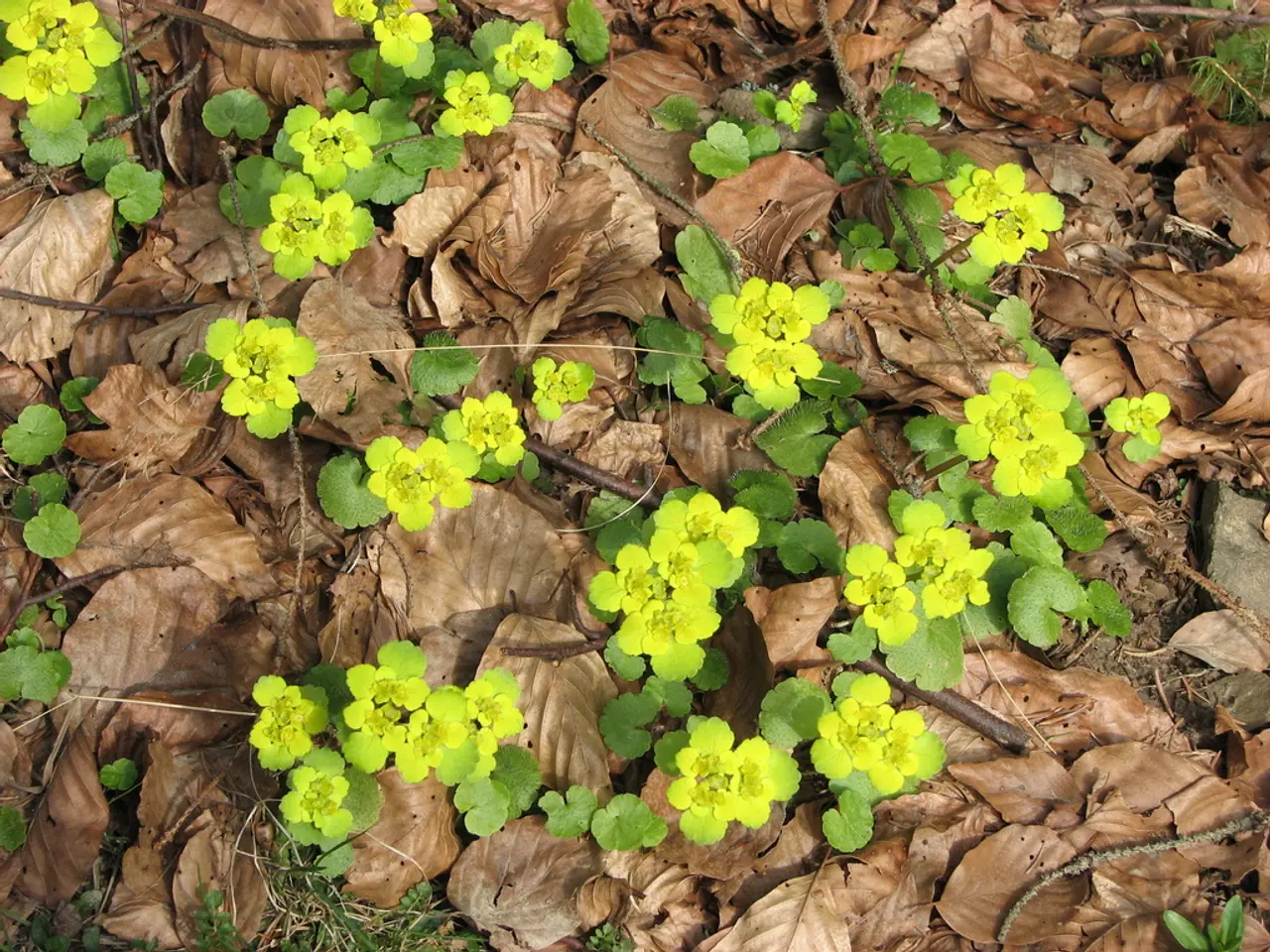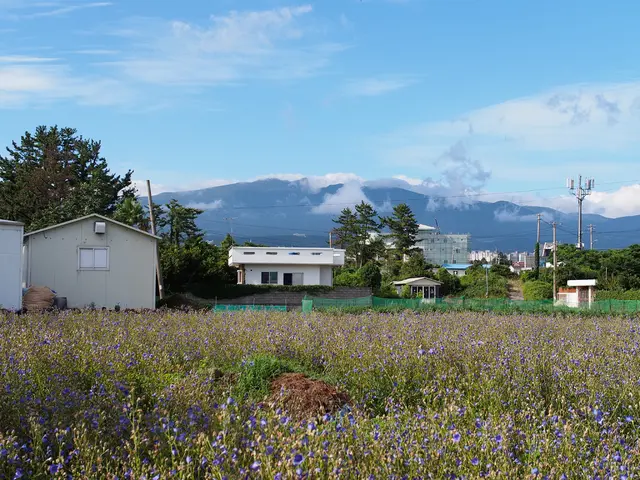Thrived-on Wet Soil: A Compendium of 23 Water-Absorbing Plants
In the quest to create a beautiful and sustainable garden, even in areas prone to flooding, there are several water-loving plants that thrive in saturated soils. These plants not only add aesthetic value but also help mitigate waterlogging issues.
River Birch (Betula nigra), a fast-growing native tree, is a great choice for flooded gardens. It tolerates flooding well and stabilizes wet soils, making it an ideal tree for soggy landscapes.
Another native water-absorbing tree is the Red Maple (Acer rubrum), commonly found in wetlands. It is adaptable to wet soils and provides good shade, making it a perfect addition to your garden.
The Black Gum (Nyssa sylvatica) is another resilient tree that thrives in wet conditions. It adds seasonal color to your garden and is a great choice for absorbing excess water.
Beyond these trees, there are several other plants that are well-suited to soggy or flooded gardens.
Cattails (Typha spp.) and rushes (Juncus spp.) are perennial plants that grow in marshy areas. They are hardy and can help absorb excess water, making them ideal for rain gardens.
Swamp Milkweed (Asclepias incarnata) is a native flowering plant that prefers moist ground. Its root system thrives in wet soils and can tolerate flooding and poor drainage.
Blue Flag Iris (Iris versicolor) is another water-loving plant that thrives in wet soils. It boasts attractive flowers and can help absorb water along pond edges or boggy spots.
Pickerelweed (Pontederia cordata) is an aquatic plant that helps absorb water along pond edges or boggy spots. It is a hardy plant that can withstand flooding.
Joe-Pye Weed (Eutrochium purpureum) is a plant that tolerates moist soils and provides late-season flowers. It is a great choice for absorbing excess water in your garden.
It's important to note that while Lily of the Valley is a perennial that thrives in moist ground, it is poisonous to pets and humans.
Other water-loving plants include Marsh Marigold, which thrives in stagnant water and produces cheerful yellow blooms in the spring. Hardy Hibiscus works magic in moist areas and produces pink and red flowers from midsummer to fall.
Japanese Iris is a plant that requires minimal care and can be left alone to grow once planted in a soggy area. It is rarely disturbed by pests or diseases.
Indian Grass is a type of grass native to North America that grows up to six feet long and thrives in deep moist soils. It is nutritious for both domestic and wild animals.
Trumpet Creeper, also called campsis radicans, has glossy dark green leaves growing up to 15 inches long and trumpet-shaped flowers that attract hummingbirds and other pollinators.
Cattails love water and are perfect for growing in swampy or marshy areas. They grow up to 10 feet tall, attract fish and wildlife, and are used to weave baskets and mats. The whole plant is edible and can be used in various ways.
Cardinal Flower prefers consistently moist soils and is a good choice for growing around ponds and swamps. It grows up to four feet tall and requires minimal maintenance.
Bee Balm, also called Monarda, is easy to grow in moist soil and attracts bees, butterflies, and hummingbirds. It grows to a maximum height of four feet and thrives in zones four through nine.
Giant Elephant Ear Plant has large leaves that resemble an elephant's ear and needs plenty of water to grow. It can grow all year round in water and has a dense root system.
Carolina Jessamine, also known as Gelsemium Sempervirens, is a plant that absorbs water and can reach up to 20 feet tall. It thrives in USDA hardiness seven through nine and does not tolerate frost.
Golden Club is a native herbaceous plant that grows in swampy areas and has dark green strap-like leaves that float over the water. Its flowers are cylindrical and long, with tiny yellow blooms on a white, fleshy stalk.
Horsetail is a bamboo look-alike and water-loving plant that spreads through rhizomes underground. It grows to 4 feet tall and 6 feet wide and is non-flowering, thriving in USDA four through nine.
Ferns have a dense root system with the unique ability of water-absorbing foliage. They thrive in damp conditions and are commonly grown in swampy areas.
Leopard Plant has showy yellow flowers that come out in early summer and can grow in water all year round without dying. It grows to three feet tall and 20 inches wide.
Gardening in areas with much water or flooding requires selectivity and strategy. Daylilies, Monkey Flower, and Ferns are excellent choices for absorbing excess water and growing under minimal maintenance.
Remember, when gardening in flooded areas, it's crucial to be mindful of the plants you choose. Some plants, like Lily of the Valley, are poisonous to pets and humans. Always research the plants you intend to grow to ensure they are safe for your family and pets.
Sources:
- Garden Design
- The Spruce
- Garden Myths
- Garden Guides
- Missouri Botanical Garden
Glen's Blog
Glen's Recent Articles
A home-and-garden lifestyle that includes water-loving plants can add aesthetic value and help mitigate waterlogging issues, especially in flooded gardens. Daylilies, Monkey Flower, and Ferns are excellent choices for such gardens, as they can absorb excess water and grow under minimal maintenance.
In addition to trees like the River Birch, Red Maple, Black Gum, Swamp Milkweed, Blue Flag Iris, and Pickerelweed, various aquatic and marsh plants, such as Cattails, Rushes, Cardinal Flower, Bee Balm, Giant Elephant Ear Plant, Carolina Jessamine, Golden Club, Horsetail, and Leopard Plant, can thrive in soggy or flooded conditions. However, it's important to research these plants carefully to ensure they are safe for pets and humans.




